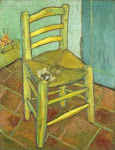
Many novels these days are set in the Roman Empire, but hardly any in Classical Athens. Art of fifth-century BC Athens is my academic specialty and the locus of my scholarship, so I was excited to hear about Karen Essex's new novel "Stealing Athena," which explores the lives of two women important to the story of the Parthenon sculptures: Aspasia, mistress of Perikles, the Athenian strategos credited with commissioning the monuments of the Classical Akropolis, and Mary Nisbet, wife of Lord Elgin, the man who oversaw the removal of many of the sculptures to Britain in the early 19th century. Just finished reading it, and I LOVED it!! The novel sweeps back and forth between Aspasia in the 5th c BC and Mary in the 19th c AD; although of course I enjoyed the parts set in ancient Athens, I actually was most caught up in Mary's story. The author's descriptions of Ottoman Constantinople in particular are sensory and evocative. The novel certainly gets one thinking about women's roles in the two time periods: how they were treated under the law, how they were expected to behave, etc. And of course (more on this in a second), one also gets to thinking about the so-called Elgin Marbles and the debate that still surrounds them.
I have to give Karen Essex two thumbs up on her research. She stays mostly true to the history and departs from it only to enhance the narrative. (Although I feel compelled to say Pheidias was *not* an architect. I know she made him the architectural mastermind of the Akropolis to enhance his role in the story, but Iktinos, Kallikrates, and Mnesikles deserve 100% credit.) Even the pickiest of classicists will be pleased how fact and fiction work together and will find occasion to smile at bits they recognize. She has a partial bibliography on her website (see link at left): of the books she lists, I recommend Jeffrey Hurwit's excellent "The Acropolis in the Age of Pericles" (available in hardcover and paperback from Cambridge Univ Press) for anyone wanting a good introduction to the Akropolis monuments, and I'd add to Essex's list the superb "The Parthenon Frieze" by my colleague Jenifer Neils, also available in hardcover and paperback from Cambridge UP. My own CUP book, "Music and Image in Classical Athens" (might as well plug myself!), has a short discussion of the representation of musicians on the Parthenon frieze, as well as discussion of the musical contests Essex briefly mentions in her novel.
Essex's book appears at a very appropriate time, for the new Acropolis Museum is nearly completed. Anyone who visited the old Acropolis Museum knows how cramped it was, very unpleasant to visit, and the new museum promises to be wonderful. Its construction re-awakens the question of the "Elgin Marbles," since one of the arguments against returning the sculptures to Greece was a lack of space. It does not erase the thorny legal issues surrounding the Greeks' desire for repatriation, but the museum takes the debate to a whole new level. Essex's novel has the potential to raise awareness of the issues among new audiences; although she does not tackle the legality question head-on, a reader can move from this novel to reading about the debate with a good background of Elgin's role (and Mary Nisbet's, more crucial than was traditionally acknowledged). The blog Elginism is a good place to keep track of the latest developments (the bloggers are pro-repatriation). It will be interesting to see how things unfold...






4 comments:
I'm definitely putting this on my TBR list. Great write-up!
Thanks, Michelle! It's definitely right up your alley. I'd be interested to know what you think!
Her book "Leonardo's Swans" is good too, if you haven't read that one. But I liked "Stealing Athena" better because of the subject.
Did you get to have a look at the new museum while in Athens?
Hi Sheramy,
I have Leonardo's Swans sitting on my shelf back hjome. I think I'll have to get to that soone rthan later!
No, we didn't go to the new museum ;[ We tried three times, after hearing from various sources that it was open, but all three times it was shut. Places in Athens keep some seriouslystrange hours, and no one seemed to know the real story -- was it open or closed?!
Sigh... I guess we'll just have to book a second trip to Athens ;]
I heard it was open too--not fully open, but with a little 'teaser' exhibit. That's odd! When I was last there in March 2007, they had the exterior mostly done, and I thought it looked neat. It has to be an improvement over the old museum. I'm surprised nothing was ever knocked over and broken, it was always so crammed.
Post a Comment